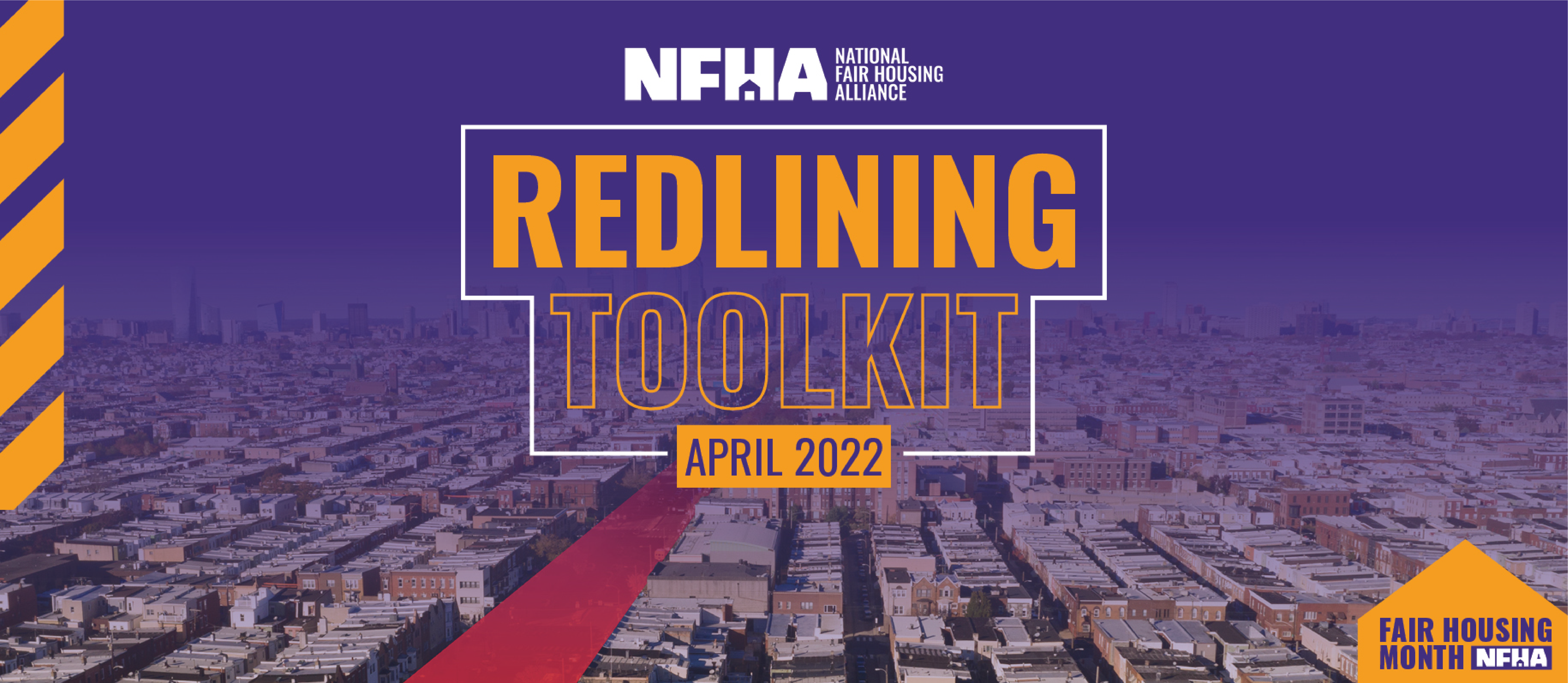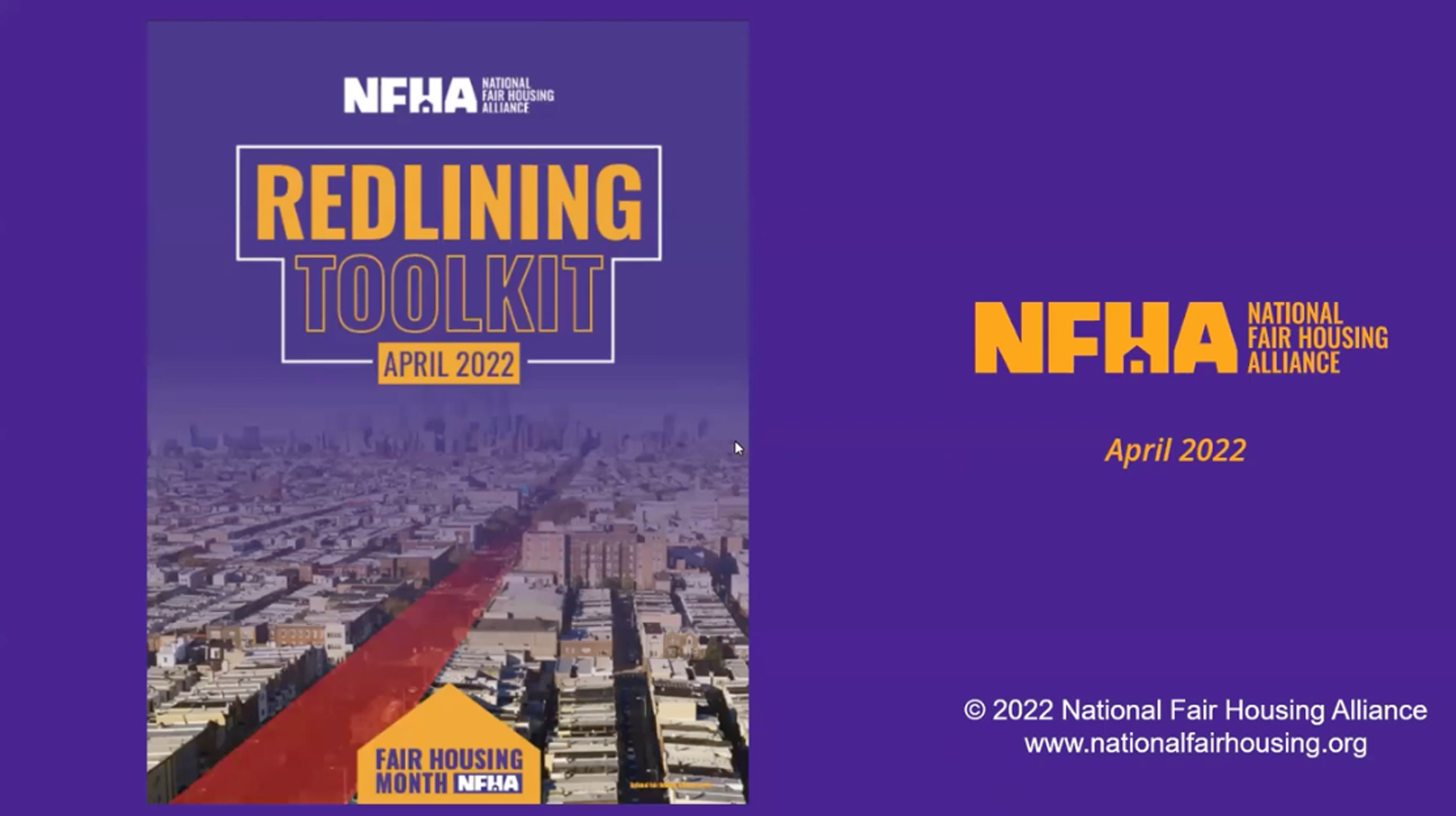Our Work
Redlining

About this issue
The identification of redlining risk and/or violations is critically important at this time. In America, homeownership is the key to financial stability as well as other opportunities, such as home equity for college education, home repairs, medical bills, small business loan collateral, or retirement. Unfortunately, the Black/White homeownership gap is currently as big as it was before passage of the Fair Housing Act in 1968 and the Black/White wealth gap is large and persistent, even when controlling for education. In addition, Latino homeownership still significantly lags White homeownership.
Given the central role that homeownership plays in the economic security of the American consumer, the National Fair Housing Alliance (“NFHA”) is providing this Redlining Toolkit to help civil rights and consumer advocates understand the public data relating to redlining risk to protect borrowers and their communities and ensure fair and equitable access to credit. Although this toolkit is mainly addressed to advocates, it can also serve as a roadmap for lenders and government entities that want to ensure compliance with fair lending laws and promote racial equity.
It will take coordinated and concerted efforts to reverse centuries of discrimination in financial services, including the redlining of communities of color.
This Redlining Toolkit is divided into two parts. Part I describes the history and legal framework for redlining and provides tools to identify specific lenders with high redlining risk. Part II is still under construction, but will provide guidance for taking action when a lender shows high redlining risk in a community of color and also provide useful resources, such as a step-by-step guide on how to analyze the data. This Redlining Toolkit is based on an analysis of the fair lending laws and regulations, federal financial regulator policies and guidance, case law, and the precedent set by public enforcement actions by the U.S. Department of Justice, the Consumer Financial Protection Bureau, and the U.S. Department of Housing and Urban Development.
Table of Contents
Topic 1
History: Redlining Perpetuated a Dual Credit Market and Is one of the Key Drivers of Today’s Wealth Gap
Topic 2
Legal Frameworks: Redlining Violates the Fair Housing Act and the Equal Credit Opportunity Act
Topic 3
Regulatory Framework: Bank Supervision and Enforcement Has Been on The Decline
Topic 1
Lending Analysis
Topic 2
Community Reinvestment Area Assessment Area
Topic 3
Branch/Loan Production Office (LPO) Locations
Topic 4
Other Risk Factors
Topic 5
Final Analysis and Conclusion

Virtual Briefing: Redlining Toolkit
On Thursday, April 14th, the National Fair Housing Alliance hosted a Virtual Briefing on the new “Redlining Toolkit.” NFHA’s comprehensive Redlining Toolkit is designed to empower advocates, lenders, government entities, journalists, scholars, and researchers to take action to ensure fair access to credit.

